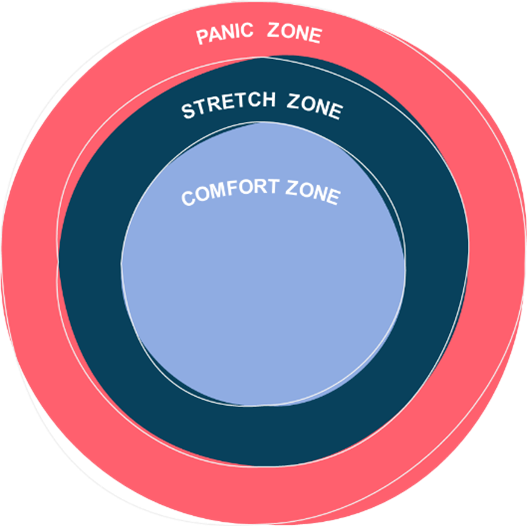“My body is betraying me. I can’t trust it anymore”. These are the words spoken by Liuan Huska, author of Hurting Yet Whole, who started experiencing chronic pain symptoms at the young age of 22. For people dealing with chronic pain symptoms these words can sound very familiar, because in a way it feels like your body is becoming your enemy rather than being your friend or even an acquaintance. However, the way we relate to our pain, our mindset around it, can actually play a significant role in how we experience it.
In an article for Spirituality Health, Liuan discusses the importance of mindset shifts to help change your relation to chronic pain¹. The impact of mindset is a topic that has become reoccurring in the world of mental and physical health, and I would like to shed some more light on it today, because I think it is especially relevant in relation to chronic pain as well. But let’s first dive into some very important findings from mindset studies that can help explain this.
The incredible impact that mindset can have on our lives has been researched in detail by Carol Dweck (among others). Her original study was done among students and their attitude towards failure. While some students seemed to be negatively impacted by failure, and showed signs of defeat, others seemed to have the natural motivation to get back up and try again. Where does this motivation come from?
Fixed Vs Growth Mindset
Dweck’s research concluded that there were in fact two clear types of mindsets with regards to one’s personal abilities, they are a Fixed Mindset and a Growth Mindset:
- Students with a Fixed Mindset generally held the belief that their intelligence and learning capacity was fixed, therefore failure is a clear indication of their overall ability. You are either born with certain abilities or not, and it is not something you can influence.
- Students with a Growth Mindset, on the other hand, tend to believe that the failure indicates a momentary measure of their ability or intelligence, and believe that it can be improved in the future. They believe that effort and perseverance will impact their future results and embrace challenges and feedback as a way to improve.
Dweck’s methodology has since been used to learn about the impact of mindset in other areas, from sports, to business, to health, and even chronic pain.
In a 2015 study, Nancy C. Higgins and colleagues applied the same research methods to chronic pain cases². They found that people that had a growth mindset, and thus assumed their pain is malleable, and as something they had control over, were able to adaptively cope with their pain, expressed lower levels of pain, and had better pain-related outcomes. Patients with a fixed mindset, who viewed their pain as non-malleable, expressed more catastrophising thoughts, showed an increased display of pain behaviour and more negative pain-related outcomes.
A recent survey done by IASP (International Association for the Study of Pain) built further on these findings. They included over a 100 people with chronic lower back pain and used the same questions from Dweck’s research for the students’ perceived intelligence, and replaced the word intelligent by pain, to determine their mindset in relation to pain. Interestingly they found “a link between a person’s mindset of pain and their symptoms. That is, those individuals with a fixed mindset of pain reported a higher level of pain and disability than those with a growth mindset of pain.” ³
What this suggests is that your mindset has a significant impact on your pain level, or at least the perception thereof, as well as on your ability to heal, because you believe it is possible.
Moving into a Growth Mindset
Can we just simply adopt a growth mindset? If this is not something that comes naturally to you, this might sound easier said than done. If there is one thing our brain loves it is familiarity, because here it knows exactly what to do, and anything that feels even remotely unfamiliar might be seen as danger! If you have been living with pain for a long time, your nervous system is on high alert, so anything outside of your familiar or comfort zone, can be perceived as grave danger. So where to start?
First Step – Awareness
Like most change, the first step is awareness. Try to become aware of the current thoughts you are having in relation to your pain. How do you relate to it? Do you view your body as the enemy? How do you talk to your body? Or to yourself? No two people have the same inner voice, or perspective, it is therefore important that you get to know your own.
Second Step – Default thoughts & Reactions
A second step is reviewing these default thoughts and reactions, and asking yourself, “is this true?”, or “what else is true?”, to find a slight shift in perspective. When looking at a wider range of possibilities and considering which of these could also be true for you, you widen your ‘fixed’ perspective a little bit.
Third Step – Reassessing
The third step is reassessing which tasks or activities you deemed impossible for yourself due to your symptoms. Often it is because they are seen in black or white, so you either can or you can’t do them. This restricts the activity all together. Let’s take walking as an example (you can use running, or any other activity that is more relevant for you), maybe you miss going for walks, you used to do these long walks, but now you just cannot walk anymore. Is that true? There is a big difference between getting up and walking to the door, or down your street, and going on a 3-hour hike. What if we start with what we can do and build it up from there.
Fourth Step – Set yourself up for success
The fourth step is to set yourself up for success. In 1991, Luckner and Nadler, came up with what they called the Learning Model (see the visual)⁴. Remaining in your comfort zone might be what feels safe to our brain, yet it is also what keeps us stuck and can lead to lethargy and lack of energy. When we do too much, on the other hand, we launch ourselves directly into the panic zone, which may discourage us to try again at all. The aim is to leave the comfort zone from time to time, step into the stretch zone, and back again. If you do this gradually, it might not feel as scary anymore, and you will see that your comfort zone starts to stretch.

What this could look like is, walking to the door, even a few times at first. Then walking down the street, once, twice, maybe around the block the next time. This way you build up your confidence. Does this mean that you will never experience any setbacks? You guessed it, NO it does not. However, here we can refer back to Dweck’s growth mindset theory and ask ourselves: do setbacks mean I will never be able to change, or are they simply part of my growth, feedback, and a chance to learn and try again?
References:
- 4 Mindset Shifts to Change Your Relationship With Chronic Pain
- Coping Styles, Pain Expressiveness, and Implicit Theories of Chronic Pain
- Treating chronic low back pain: is it as simple as changing a person’s mindset?
- Referenced in Why Has Nobody Told Me This Before, by Dr. Julie Smith, chapter 5: On Self-Doubt, p. 164-165
Main photo by Mohamed Nohassi on Unsplash




